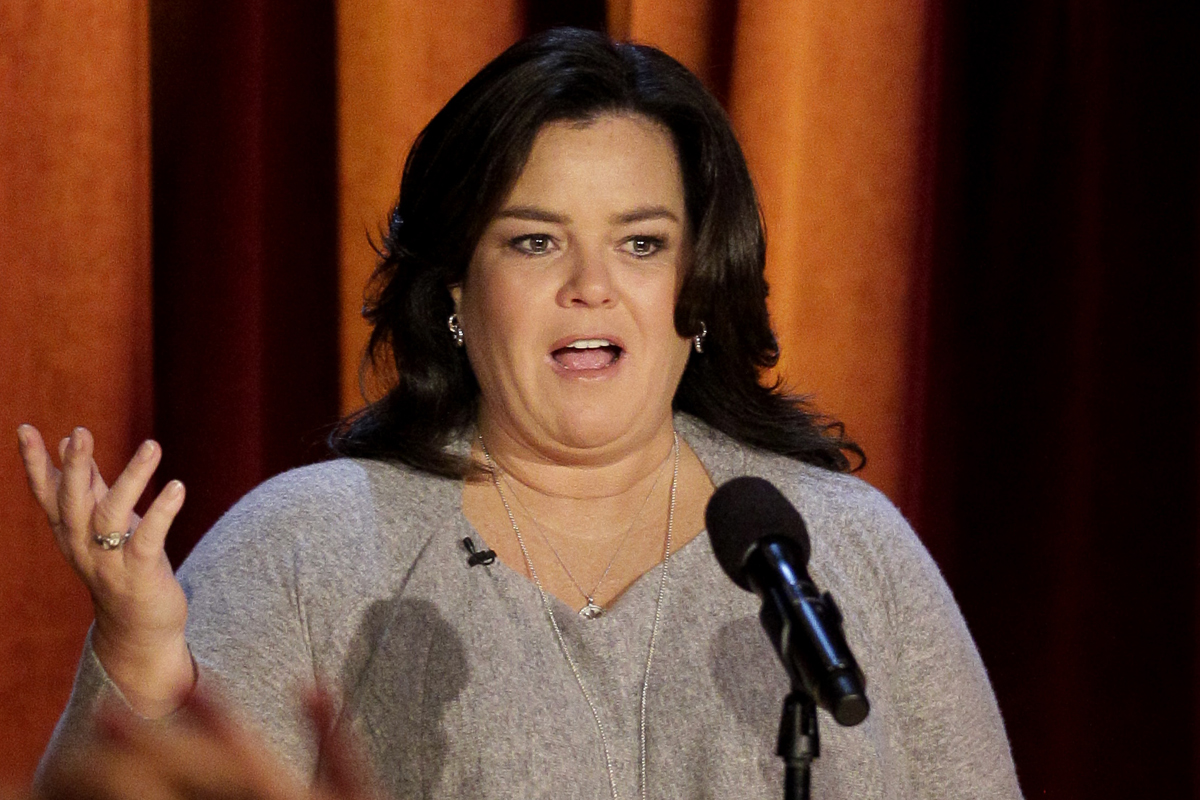
The jokes stop being funny when it turns into a grown adult bullying a child.
As Rosie O’Donnell first struck out against President Trump’s son Barron following the ceremonies of the Presidential inauguration, Kathy Griffin has taken the abuse to a whole other level.
While Griffin should have been silencing herself – except to apologize for posing in a picture where she held the faux decapitated head of President Trump – she instead used her elevated spotlight to normalize her graphic and deranged “joke”.
She offered no remorse to how her image might have affected Barron Trump, or any other American child who may have been subjected to it throughout the media storm.
Both Hollywood figures like Kathy Griffin and Rosie O’Donnell seem unapologetic for their open comments directed towards an innocent child, with Griffin going so far as to proclaim back in December 2016 that she would “go directly” for Barron.
World Politicus reported:
First, O’Donnell claimed that the President’s youngest son is autistic. Griffin said the fourth grader is “dead behind the eyes.” Oh, she was worse than O’Donnell. Barron is just a kid, so let him be!
Griffin “congratulated” President Trump with a shocking statement, saying that she has an intention to use Barron as a target during the entire presidency. So sick and so terrible.
“…I’m happy to deliver [a] beat down to Donald Trump — and also to Barron. You know a lot of comics are going to go hard for Donald, my edge is that I’ll go direct for Barron. I’m going to get in ahead of the game,” stated Griffin.
Though Griffin offered some diluted “I went too far” lines in her press conference, she then cowardly reverted to suggesting the photo was only a joke and that its imagery was subject to individual interpretation.
The horrific image of our President being decapitated has been plastered onto so many media and news channelsthere is no doubt many children have already been exposed to its terroristic-like implications.
The question is then, how will our children interpret the gruesome imagery and the personal attacks upon Barron Trump, who is a young person just like them?
As parents in the world today, it is important we educate and inform our children about the nature of these images and attacks from the left, regardless of our political alignment. We are raising the next generation, and they will inherit the state of the world we leave them, as well as the perceptions we offer for them to view it as.
Though Griffin called her photo with Trump’s faux decapitated head just a ‘joke’ and open to interpretation, it’s images and shocking actions like this that may work to normalize terror and the disregard for human life and leadership within our nation.
With recent acts of terrorism that have taken place in London, like the explosion at the Ariana Grande concert that targeted children, parents must consider what imagery like this is saying and how it is ultimately playing into the culmination of ideas that are normalizing terrorism and its heinous nature directly on our children.
Ellen Hendriksen, PhD, Savvy Psychologist, has studied the effects terrorism and violence has on children of various ages, and offers some tips on how to better prevent our children from being exposed to these images:
“Tip #1: Avoid letting young children see disturbing videos. As is developmentally appropriate, the line between fact and fantasy is fuzzy for young kids. In order to prevent needless fears and nightmares, keep the news channel turned off when they’re around. Likewise, put off high-emotion conversations or inflammatory radio about recent events until they’re out of earshot. You may think they’re not even paying attention, but little kids are like sponges: they absorb everything”
Tip #2: If you do walk in to find your preschooler staring at disturbing footage on TV, stay calm. Simply say “Hey, let’s give the TV a rest,” turn it off, and then gently redirect: “Tell me about this drawing you were working so hard on.” Don’t lunge for the remote, cover their eyes, or snap “You shouldn’t be watching that.” If you make it dramatic, it will make more of an impression and create anxiety or guilt.
Tip #3: If your young child re-enacts a tragedy, help him play it out until everyone is safe. For example, if your young son builds a LEGO city and then crushes it, saying it was “bombed,” say, “Time to call in the fix-it crew!” Join him in rebuilding it and then ask how it can be made safe. Perhaps he’ll build a wall, make a couch-cushion shield, or have a toy dinosaur guard it. Especially for younger children, accuracy matters less than feeling safe. Most importantly, drive home the sense of safety non-verbally by offering hugs and cuddles for no reason at all.
Tip #4: With older kids, start the conversation by asking what they’ve heard. Especially for teens on social media, you can be sure they’ll hear about recent terrorist events. Use a TV or online story as a prompt, and then ask, “What are people at school saying about ISIS?” Or, if your kids bring it up, clarify what they know by asking more: “What have you heard about that?”
If they say “nothing,” you don’t have to force them to talk. You’re aiming for presence, not pressure. So long as they know you’re a safe, non-judgmental person to whom to talk, conversation will come when they’re ready.
Parents, we are in an era where we must consciously be a voice of reason and the interpretation for our children towards the increasingly vile social media, lest they accept these attacks as normal cultural behavior.
Do you feel our cultural integrity is being diminished with outrageous acts and attacks demonstrated by Kathy Griffin and other Hollywood members?
How do you feel that images and acts like these are affecting America’s youth?
Tell us your thoughts in the comments section below.
